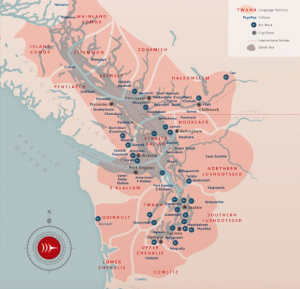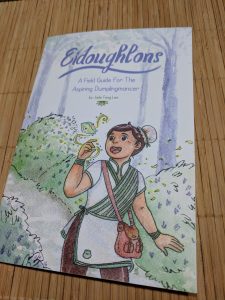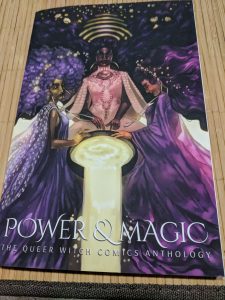The essence of the broader Black Lives Matter (BLM) movement stems from the enduring struggle the Black community in the United States faces in response to violent systematic racism. BLM as a social movement takes inspiration from the ideologies of queer and Black activists such as those in the Civil Rights movement and the Stonewall riots. The three essential women of colour organizers of the original Black Lives Matter movement were Alicia Garza, Patrisse Cullors, and Opal Tometi (Global BLM 2015). They organized in 2013 in response to the acquittal of Trayvon Martin’s murderer, George Zimmerman. Zimmerman fatally shot 17 year old Trayvon Martin while on neighborhood watch, after perceiving Trayvon as a threat despite evidence of him being unarmed and not threatening (Global BLM 2015). In the aftermath of the tragedy, George Zimmerman was acquitted for murder, sparking outrage against the state-permitted violence against people of colour. This devastating saga reignited the necessity of a movement that calls out the institutional racism and prejudiced police brutality Black folks experience. The continued deadly police brutality that took the lives of many, including: Tamir Rice, Tanisha Anderson, Mya Hall, Walter Scott, Sandra Bland and many other victims, encouraged the political intervention of BLM due to the systematic targeting (Global BLM 2015).
The movement grounds itself in queer of colour theory by centering conversations around the disproportionate violence that Black women and Black trans women experience. The militarized police response to the 2014 Ferguson protests, for the brutal murder of Mike Brown by police officer Darren Wilson, was a larger scale reiteration of the institutional violence to which Black communities are subject. The state-sanctioned use of tear gas and pepper spray against BLM organizers illuminates the ways in which the justice system violently treats people of colour. After this event, the organizers of BLM inspired activists to introduce chapter organizations in cities across America, and now the globe. The rising number of Black folks killed by police officers in the U.S. has, and continues to, stir communities to seek an end to state-sanctioned, racist violence. This has resulted in the proliferation of BLM chapters in most major cities across the U.S., as well as in Canada, Australia, Brazil, South Africa, the U.K. and many more (Christi, 2016). Black Lives Matter came to Vancouver in March of 2016 in order to draw attention to the violence endured by invisible Black communities in the Lower Mainland of British Columbia, as well as to organize in solidarity with other chapters across North America (Vancouver BLM, 2016). The reach of the BLM movement is unlimited and global, because it addresses the problem of systematic police brutality that is faced by people of colour everywhere. In this way, the non-local BLM movement inspired local activism and organizing, in support of a community otherwise rendered invisible and subject to state violence.
In discussing the history of Vancouver’s chapter of Black Lives Matter, it is vital to mention the significance of Hogan’s Alley. Hogan’s Alley, a neighbourhood bordering Vancouver’s Chinatown and Japantown, was destroyed in 1970 as per the construction of the Georgia Viaduct. Prior to its dismantling, this neighbourhood was home to many black families, businesses, and a church. In the context of the Black Lives Matter Vancouver chapter, the history of erasure and displacement of Black bodies in Vancouver cannot be ignored. The dispossession of the Black community living in Hogan’s Alley was just one step in this erasure, along with the erasure of Black citizenship from the public conscious. While it is by no means correct, there is often the assumption that very few black people live in Vancouver or the surrounding Lower Mainland. This ideology detaches the diverse experiences of Greater Vancouver’s black population, and further, overlooks the occurrence of anti-Black police brutality, and the larger anti-Black actions existing in Vancouver. While the elimination of Hogan’s Alley is a shameful part of our history, discourse in Vancouver must recognize the continued erasure, displacement and marginalization of Black people today.
Moreover, the Vancouver chapter of Black Lives Matter takes into consideration their presence on unceded, Indigenous territory. This recognizes that the displacement of people out of Hogan’s Alley is only one narrative of Canada’s larger history of displacement of Indigenous folks, as well as marginalization of minority/migrant communities. In its formation, Black Lives Matter Vancouver addressed the historical and present violence against Indigenous and Black, specifically queer and trans, bodies enacted by the police.
In addition to addressing the connections between Vancouver’s histories of systematically oppressing and erasing Black lives, it is also necessary make connections to other organizations (which do not necessarily have ties to Vancouver) that emphasize mobilizing and organizing Black feminist activisms, such as the Combahee River Collective. It is another group of Black feminists who have been working towards defining the group itself and their interaction with other organizations and movements. Black Lives Matter has commonalities with the Combahee River Collective—in committing to work against oppressions concerning race, gender, sexuality, class, and especially how they work together to affect marginalized groups. BLM Vancouver’s statement on their chapter website specifically state that they aim to “centre the voices of Black folks as well as other folks of colour and hope to lift up those who are queer, women, trans, differently abled, poor, or otherwise marginalized” (Vancouver BLM, 2016). It is pertinent to note that, though BLM has been critiqued for its emphasis on Black lives and has been retorted with “All Lives Matter”, their statement reflects how BLM has never been about valuing only Black Lives. Rather, it is a recognition of those who have been traditionally and systematically devalued, allowing the voices that have been silenced or ignored to be heard—especially those of Black lives because this organization is founded by Black feminists. This statement includes a variety of identities that address not only race, but gender, sexuality, class, able-bodiedness, and other marginalizations, because these are intersections that co-exist rather than categories to which an individual can only belong singularly. One can contend that “all lives matter,” but this is in fact not the case, as is reflected in legislations, statistics, and other experiences that may have gone undocumented. Through law humans may be formally recognized as equal, yet groups like BLM challenge the inequalities that do indeed occur. The Combahee River Collective ends their statement by saying that they “know that [they] have a very definite revolutionary task to perform and [they] are ready for the lifetime of work and struggle before [them]” (Combahee River Collective, 1982, 281). This illustrates how the political work done by activists is part of a larger, broader process. It is a journey, it takes time, and most of all, it takes work.
References:
Christi, Jeyolyn. “The International Reach of Black Lives Matter.” NAOC, 2016, natoassociation.ca/the-international-reach-of-black-lives-matter/.
global, BLM 2015. blacklivesmatter.com/about/herstory/.
Combahee River Collective. (1982). The Combahee River Collective statement. In Smith, Barbara (ed.), Home girls: a Black feminist anthology, pp. 264-274.
Vancouver, BLM. “About Us.” Black Lives Matter Vancouver, 15 July 2016, blacklivesmattervancouver.com/about-us/.


